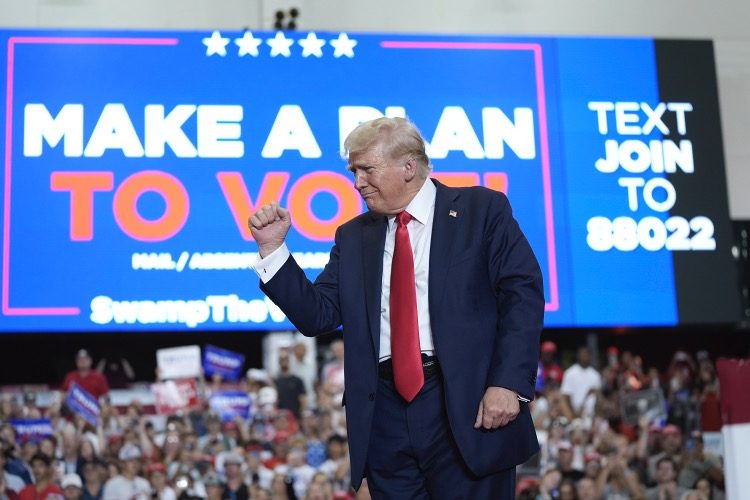
Vice President Kamala Harris is polling better against President Donald Trump in general election polls than former candidate and President Joe Biden, but she is still forecast to lose on November 5.
Election prognosticator Nate Silver gives Harris a better chance of winning the popular vote than Trump. But like Hillary Clinton in 2016, she might well lose the Electoral College that settles the election.
As well, the Real Clear Politics Average of general election polls gives Trump a two-point lead nationally, and he’s ahead in six of the seven all-important battleground states that could tip the election for either candidate.
Silver’s forecast, the strong possibility that Trump could again lose the popular vote but win the election, is the reason Democrats want to abolish the Electoral College. They’ve been pushing to do so since 2000, when George W. Bush lost the popular vote to Al Gore but won the college.
Silver’s Forecast
This morning, Silver laid out the probabilities for Harris and Trump.
As the popular vote goes, Harris wins, with a 57.1 to 42.9 percent chance of winning the popular vote.
But the popular vote, of course, doesn’t settle presidential elections in the United States. The Electoral College does.
Thus does Trump’s chance of winning stand at 56.9 percent against Harris’ 42.5. Silver’s model gives Trump 273.8 electoral votes against Harris’ 263.6.
As Silver wrote at his Silver Bulletin website, “Harris will give Democrats a fighting chance. In fact, she’s a slight favorite over Donald Trump in the popular vote, which Democrats have won in all but one election since 2000.”
But that might not matter, he continued:
However, she’s a modest underdog to Trump in the Electoral College, risking a repeat of the popular vote-Electoral College split that cost Democrats the 2000 and 2016 elections. Harris isn’t unique in this regard: Biden also had a large Electoral College-popular vote gap in 2020, barely winning several tipping-point states despite winning the popular vote by 4.5 percentage points. But this is still a problem for Democrats, and we show Harris as having a slightly wider popular vote-Electoral College gap than Biden had in his version of the forecast.
Right now, Silver has Harris ahead in his average of election polls, 44.5 percent to 44.1
Real Clear Politics Average
Silver’s model that puts Harris ahead of Trump differs dramatically than the Real Clear Politics Average, which put Trump ahead of Harris by two points, 48.1-46.1
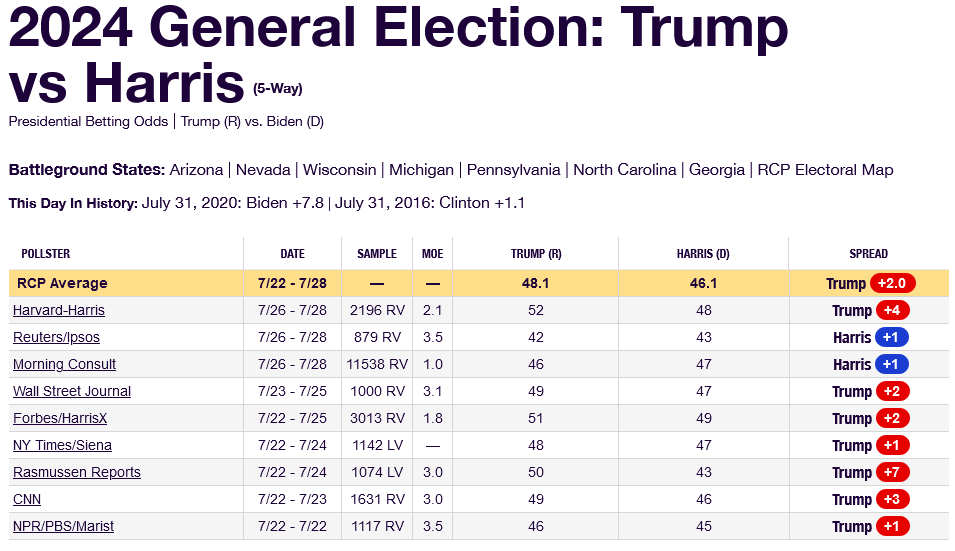
Trump has prevailed in 15 of the last 20 polls.
And again, in the crucial battleground states, Trump has maintained the lead that he established over Biden except in Michigan, where Harris is ahead by two points.
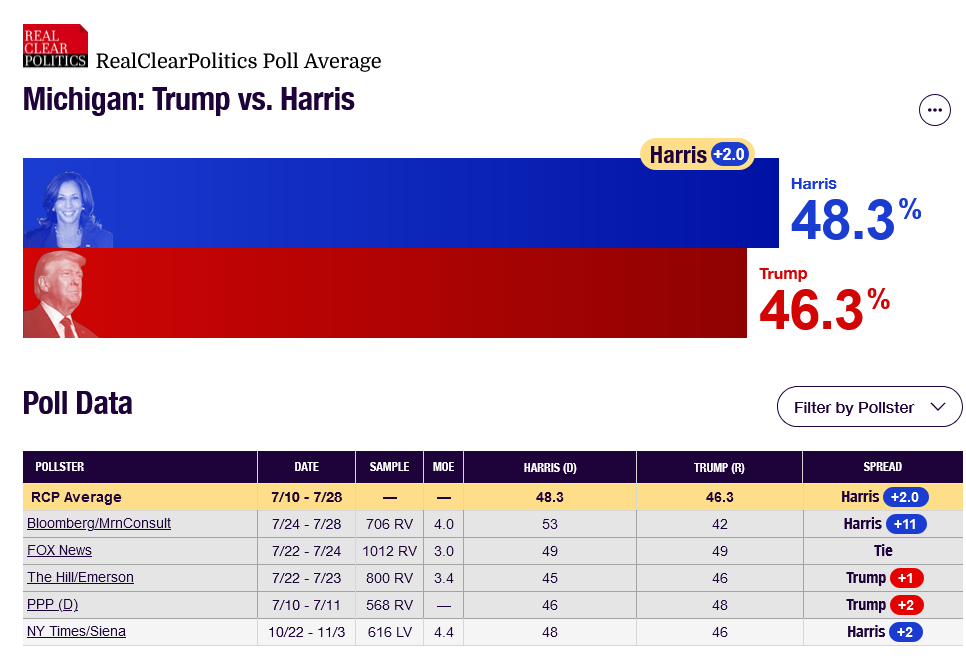
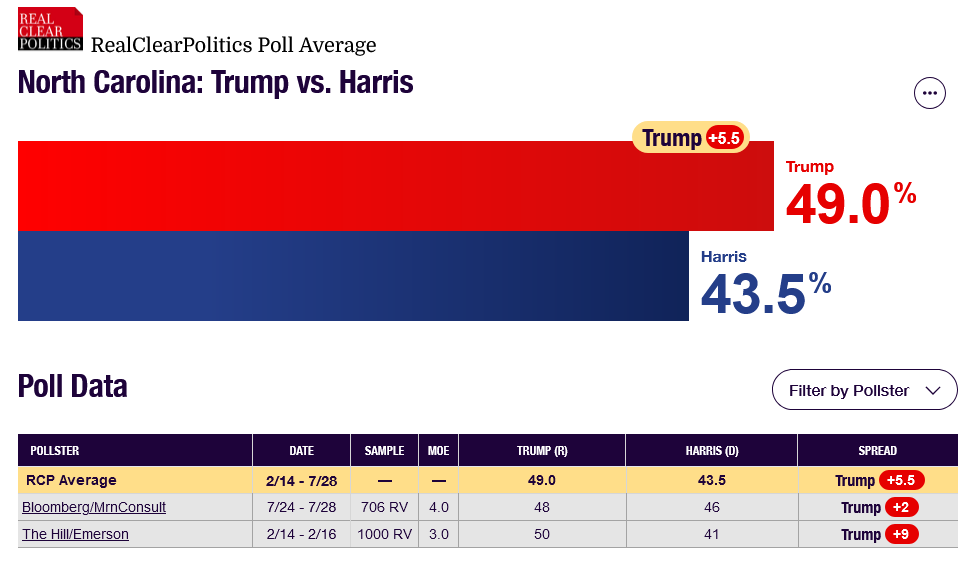
Trump leads by the following margins in the rest:
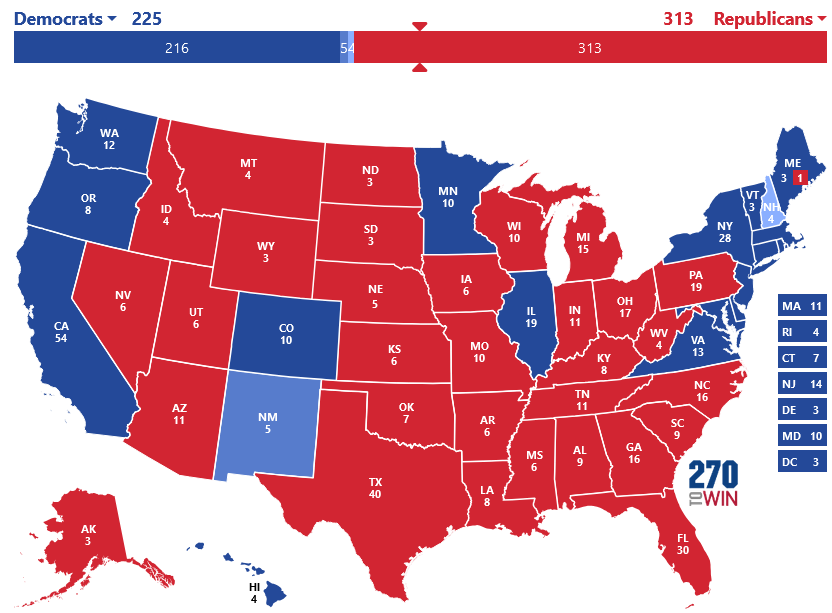
Giving Trump all the states he is strongly favored to win, plus the battleground states barring Michigan, gives Trump a 313-225 electoral college. And that figure omits Virginia, where polling had shown he was competitive in the state, where voters went for Barack Obama in 2008. Those voters are concentrated in the major urban areas of Roanoke, Richmond, Norfolk, Hampton Roads, and Northern Virginia, which comprises Fairfax and Arlington counties and the city of Alexandria.
In June, polls showed that Trump was tied with Biden in the Old Dominion. Harris holds a five-point lead based upon one New York Times/Siena poll.
Whether Harris maintains that lead is open to question given that Biden had ceded ground to Trump in the once conservative state, which again, is red throughout except for the urban areas, a reflection of the election map nationwide.
That said, as the Silver Bulletin headlined its analysis, “Harris is in much better shape than Biden. But she has one big problem. It’s the Electoral College.”
Big Problem for Democrats Generally
And indeed, the Electoral College is a big problem for the Democrats as a party. They don’t like it because rural Americans have a chance to outvote leftist urban areas in a few key states such as California and New York.
Knowing they likely can’t amend the Constitution, leftists have emerged with a new idea, the National Popular Vote Law, which would permit states to join together and cast their electoral votes for whoever won the popular vote nationally.
“The National Popular Vote law will take effect when enacted by states with a majority of the electoral votes (270 of 538),” the website says:
Then, the presidential candidate receiving the most popular votes in all 50 states and DC will get all the electoral votes from all of the enacting states. That is, the candidate receiving the most popular votes nationwide will be guaranteed enough electoral votes to become President.
Not surprisingly, the effort is popular almost exclusively among blue states, and backers claim that 3,705 state legislators endorse it.
Frighteningly, that is half of the nation’s 7,575.

